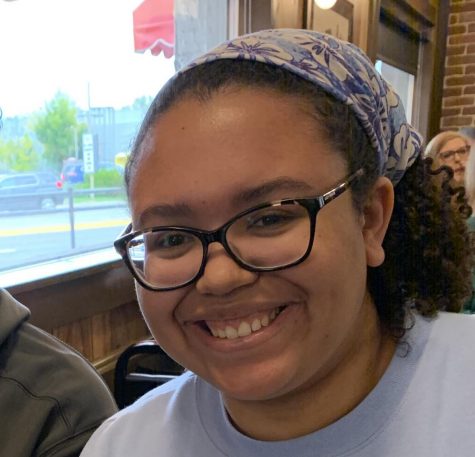Level Up! | Some of my favorite indie games
Level Up! Is a biweekly blog about all types of games, from “Dungeons and Dragons” to “Mario Party”
March 27, 2022
If I’ve learned one thing from studying the humanities, it’s that you will often find a word or concept you thought you understood, and then it turns out to be much more complicated, complete with different people arguing over the concept. So now you have to do a bunch of side research to make sure you even understand the concept you’re writing about.
Major in the humanities — it’s fun.
Anyway, I wanted to write this week about indie games, but it turns out the definition of “indie” when it comes to games is a little murkier than I thought. The broadest possible definition gamers seem to agree on is that an indie game is a release in which a studio owns an independent property and has complete creative control, without the creative influence of a major publisher.
When we talk about games, there are two components people discuss — the studio in charge of making the game, and the publisher in charge of marketing and financing. Large publishers, such as Nintendo, will contract out to studios to make games. Major publishers that own the IP can make demands of a studio, or even switch studios between games. Think of the Marvel Cinematic Universe and how films in the same series can have different directors, even as Disney still owns the rights.
The main point of contention of whether something is “indie” comes with how much involvement a major studio can have before it’s a AAA game. Sometimes a publisher might help with marketing but do nothing else, sometimes the studio or creator will be completely independent and make money through crowdfunding, sometimes a publisher can own a studio but still market the game as “indie” because they aren’t involved in telling the development team what to do — although they could.
All this is to say, please forgive me if some of the games I’m about to recommend aren’t what you’d call “indie” — the definition is less rigid than I thought. I’ve certainly seen all of these games called “indie,” though, if that makes you feel better.
“Transistor” (Switch, PS4, Windows, Mac)
It would be very easy to recommend SuperGiant’s most recent offering, “Hades,” but I thought I’d give its predecessor some love. “Transistor” is an action game where you play as main character Red and fight your way through an abandoned city with a giant sword containing the spirit of Red’s boyfriend. You have the option to freeze time so you can plan out moves, which is great for people who are bad at games that require real-time reactions.
The game is short and takes you through a gorgeous art deco-inspired city. The game really encourages you to explore as much as possible and to try out different combinations of skills to get all the background details and character information. Darren Koob, the composer on the SuperGiant team, once again teams up with Ashley Barret to set the mood with tracks like “In Circles,” “The Spine” and “We All Become.”
“Murder By Numbers” (Switch, Windows)
This game has nothing to do with the 2002 film starring Sandra Bullock. “Murder by Numbers” is about Honor Mizrahi, an actress who becomes an amateur detective when she meets SCOUT, a flying robot designed to help solve crimes. The game is mostly a mix of visual novel exploration and finding evidence via completing nonograms.
This game is bright and cheery. Hato Moa — creator of “Hatoful Boyfriend,” the pigeon dating sim — is the character designer, explaining why everyone’s outfits are flashy and over the top. It’s a really fun game, and if you enjoy the Ace Attorney series, you’ll definitely like it. Also, I’ll be honest, I just like getting coming-of-age stories for adult Black women in my video games.
“Journey” (iOS, Playstation 3, Playstation 4, Windows)
“Journey” is another relatively short game, and can even be completed on your phone. You play as a nameless character on a pilgrimage, solving puzzles as you attempt to reach a mountain in the distance.
The game is very relaxing, and I could spend hours wandering around and appreciating the gorgeous scenery and soundtrack. It also has a unique setup for multiplayer play. At times on your journey you’ll see other pilgrims, but you can only communicate with them via chirps. These are real people, and it’s randomized, but you can opt to work together to complete different puzzles. It’s really charming and heartwarming to find a friend and solve a puzzle together, even when you don’t know who they are and whether you’ll ever see them again.
“80 Days” (Switch, Android, iOS, Windows, Mac)
Speaking of games I find relaxing, “80 Days” is a resource management simulator based on Jules Verne’s “Around The World In 80 Days.” You play as the valet Passepartout and try to help your boss, Phileas Fogg, win a bet to circumnavigate the world in that amount of time by discovering routes, getting help from locals and keeping track of your money and luggage.
This story takes place in an alternate Steampunk universe to the original book, and each potential stop comes with its own slate of characters and potential events, leading to many different permutations you can take. No two trips around the world are the same, and this is a fun game to play over and over again.
“Gone Home” (Switch, iOS, Playstation 4, Windows)
I’ve played this game twice, both for class, and I love it. The gameplay isn’t very complicated, it’s pretty much walking around and exploring an abandoned house. But it does capture one of my favorite things about video games as a medium — the ability to use the environment to tell a story.
Most of the story is found not in dialogue, but in observing all of the little details as you explore the house and learn about the lives of this one family through items scattered around and letters.
Despite how the game might look, it is not a horror game. Yes, there is an abandoned house and none of the lights work, but you don’t have to worry about zombies coming to kill you or making any ghosts angry, which lets you focus in on the story. Honestly, I’d recommend this game to anyone who’s interested in level and set design — it’s a great case study of how games can tell stories in unique ways.




